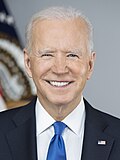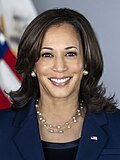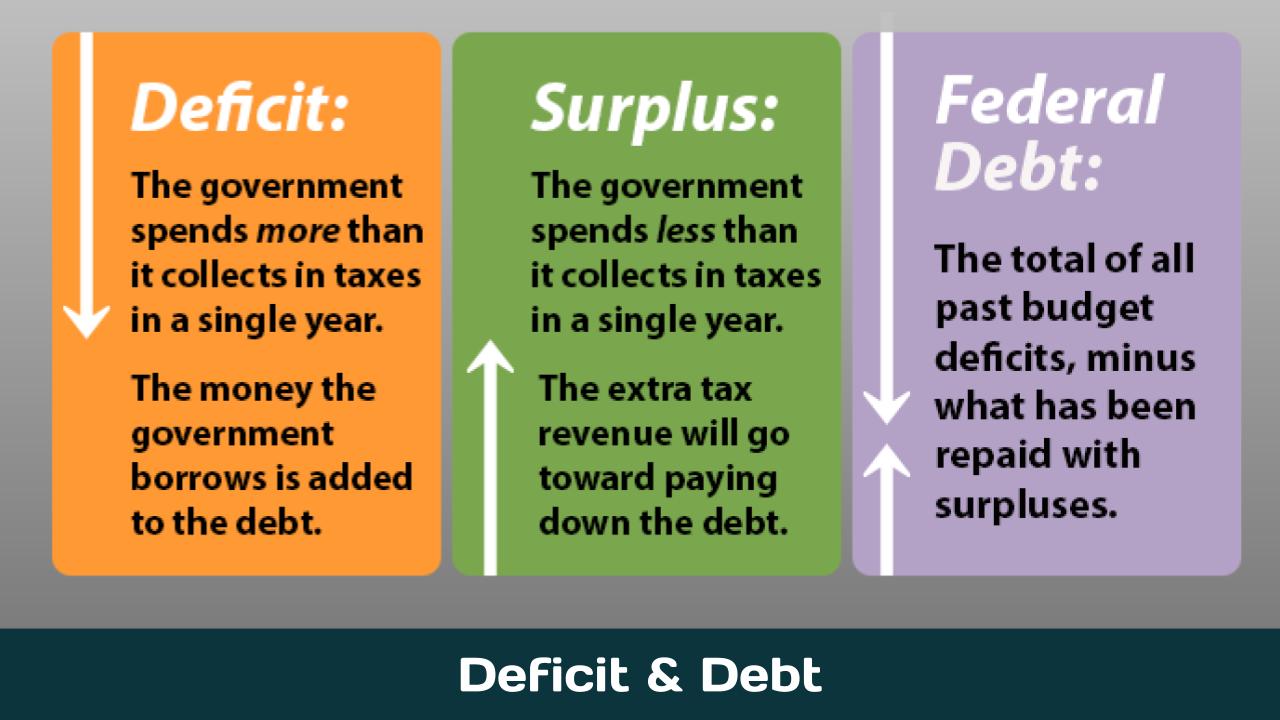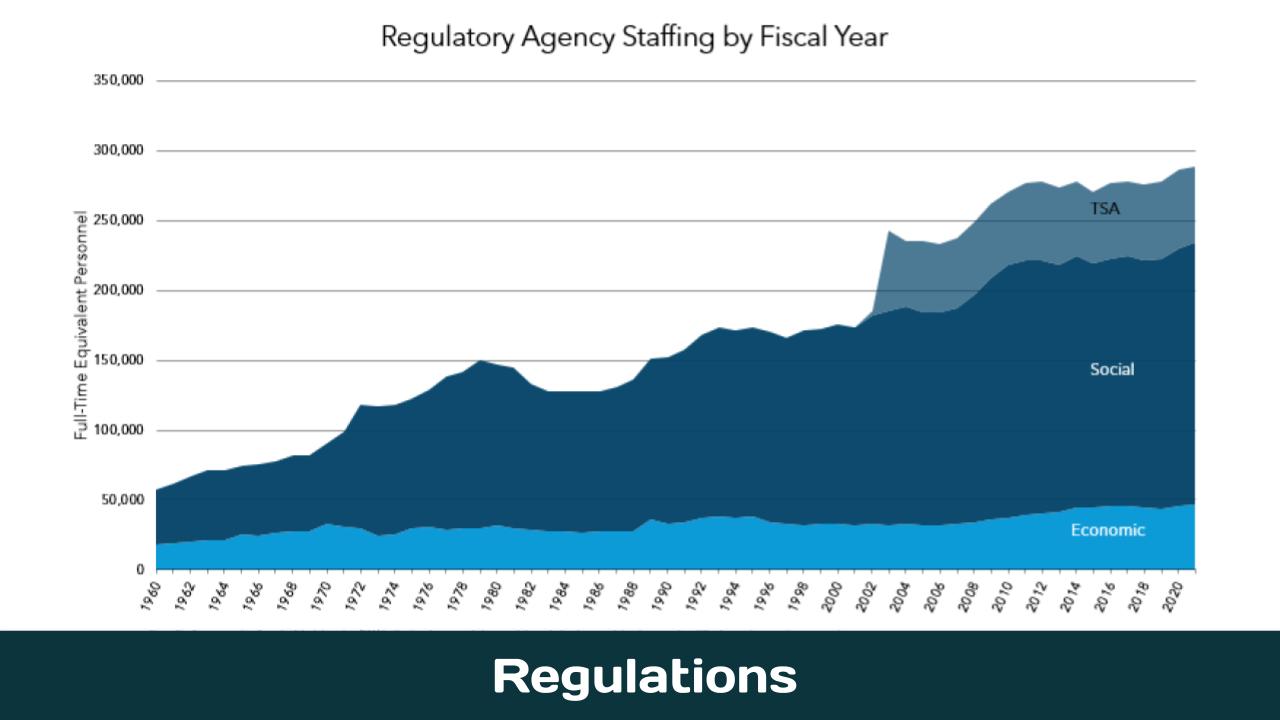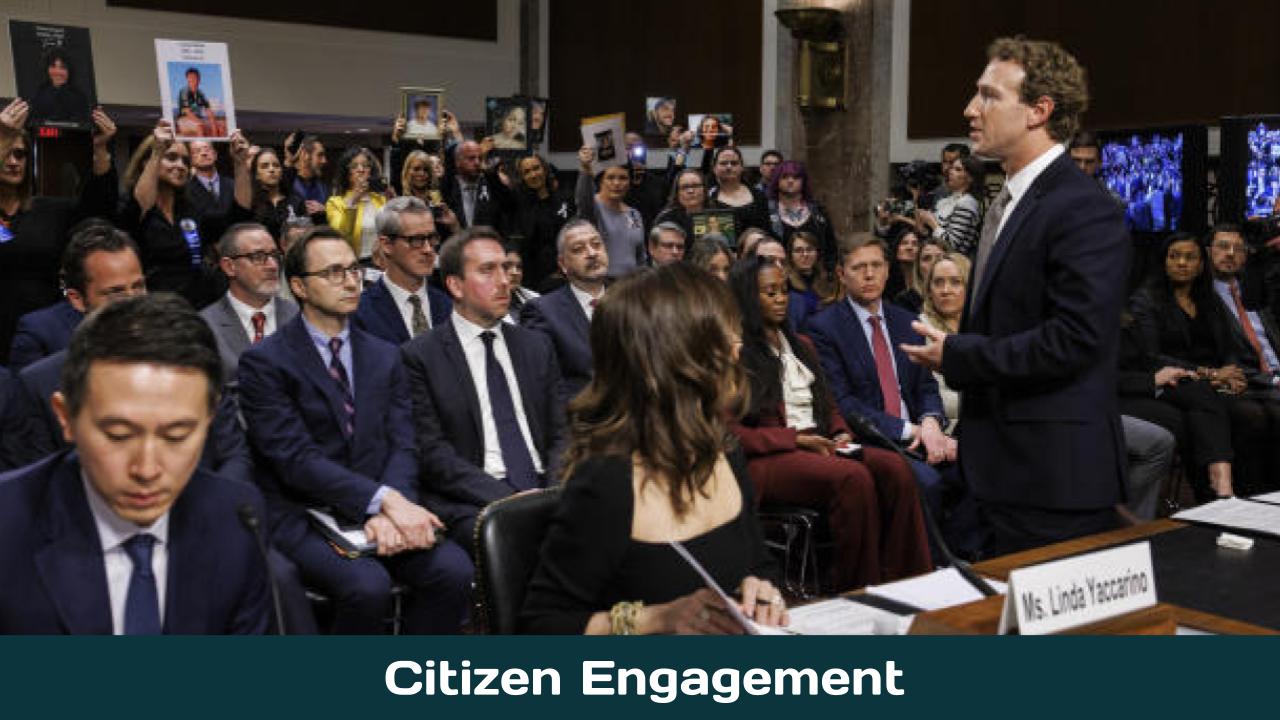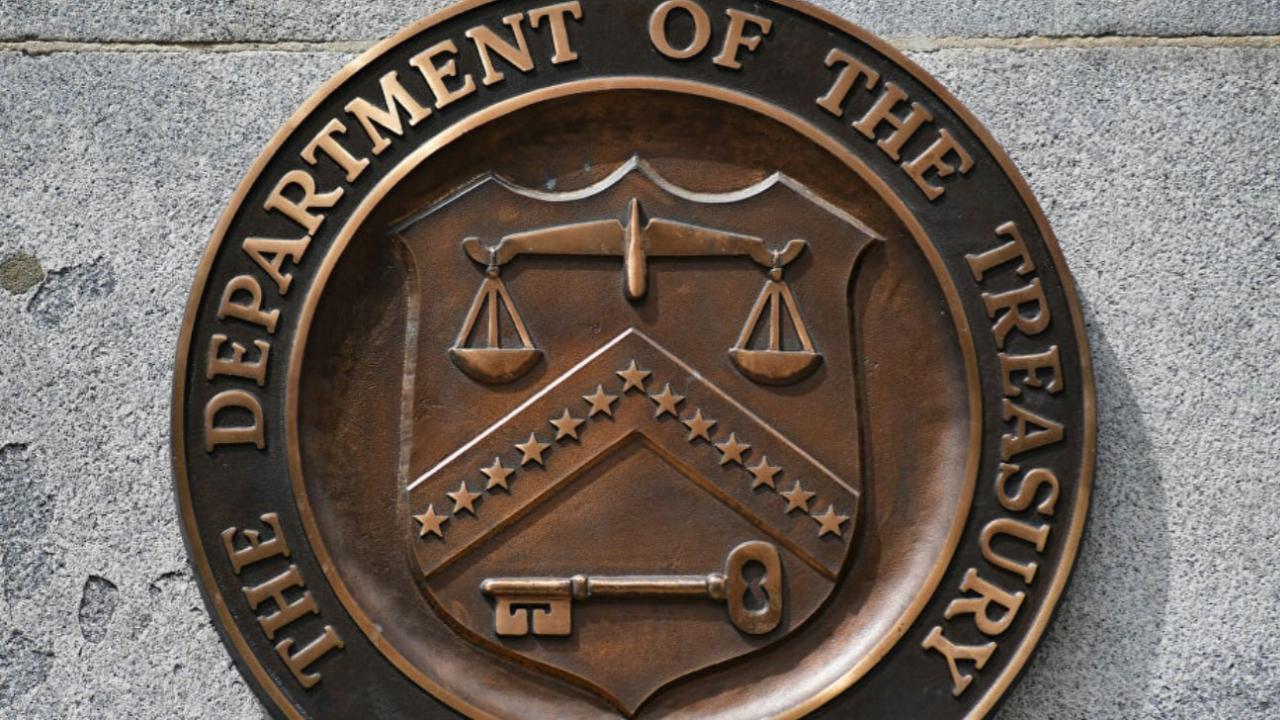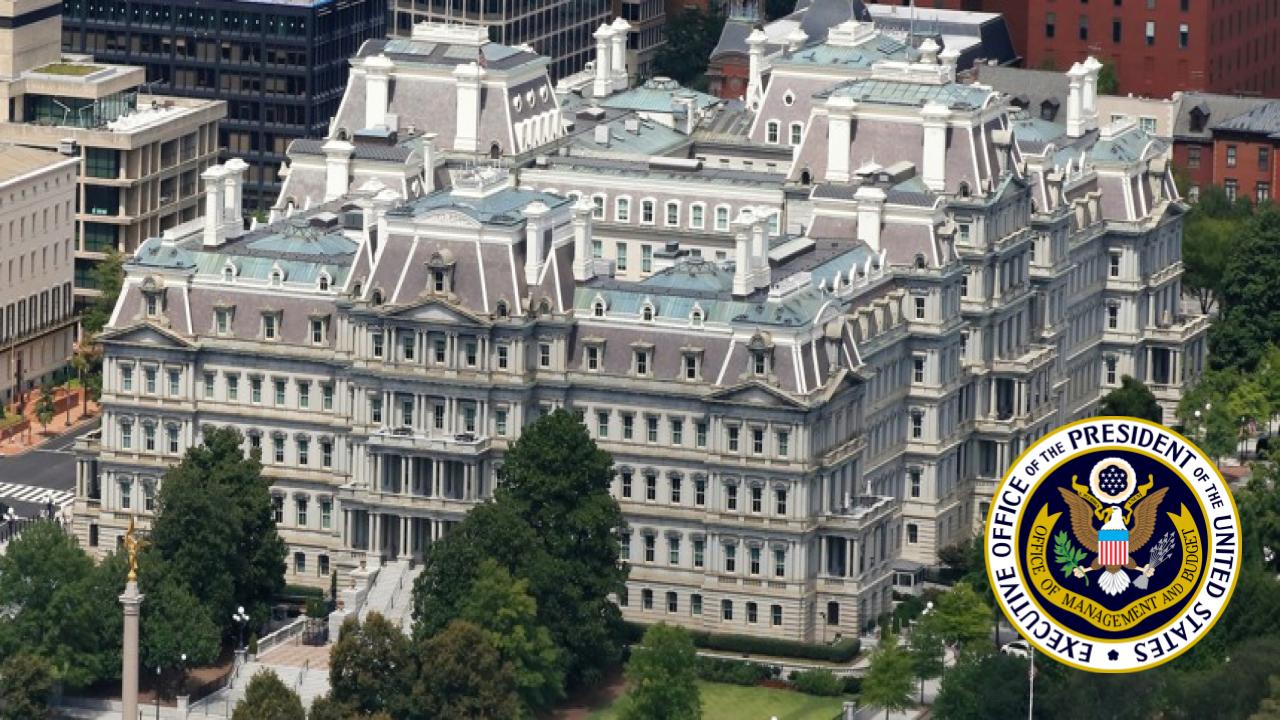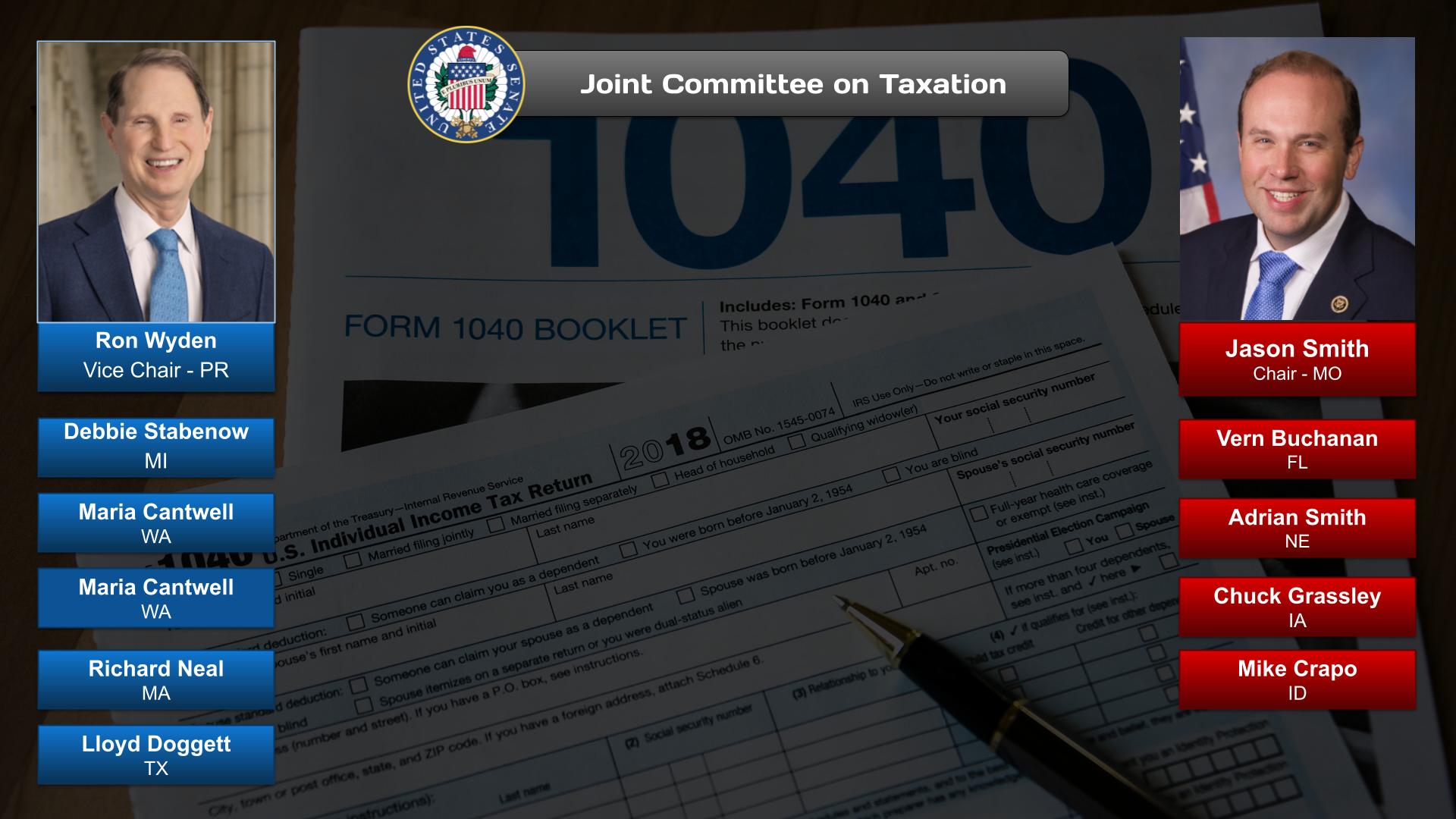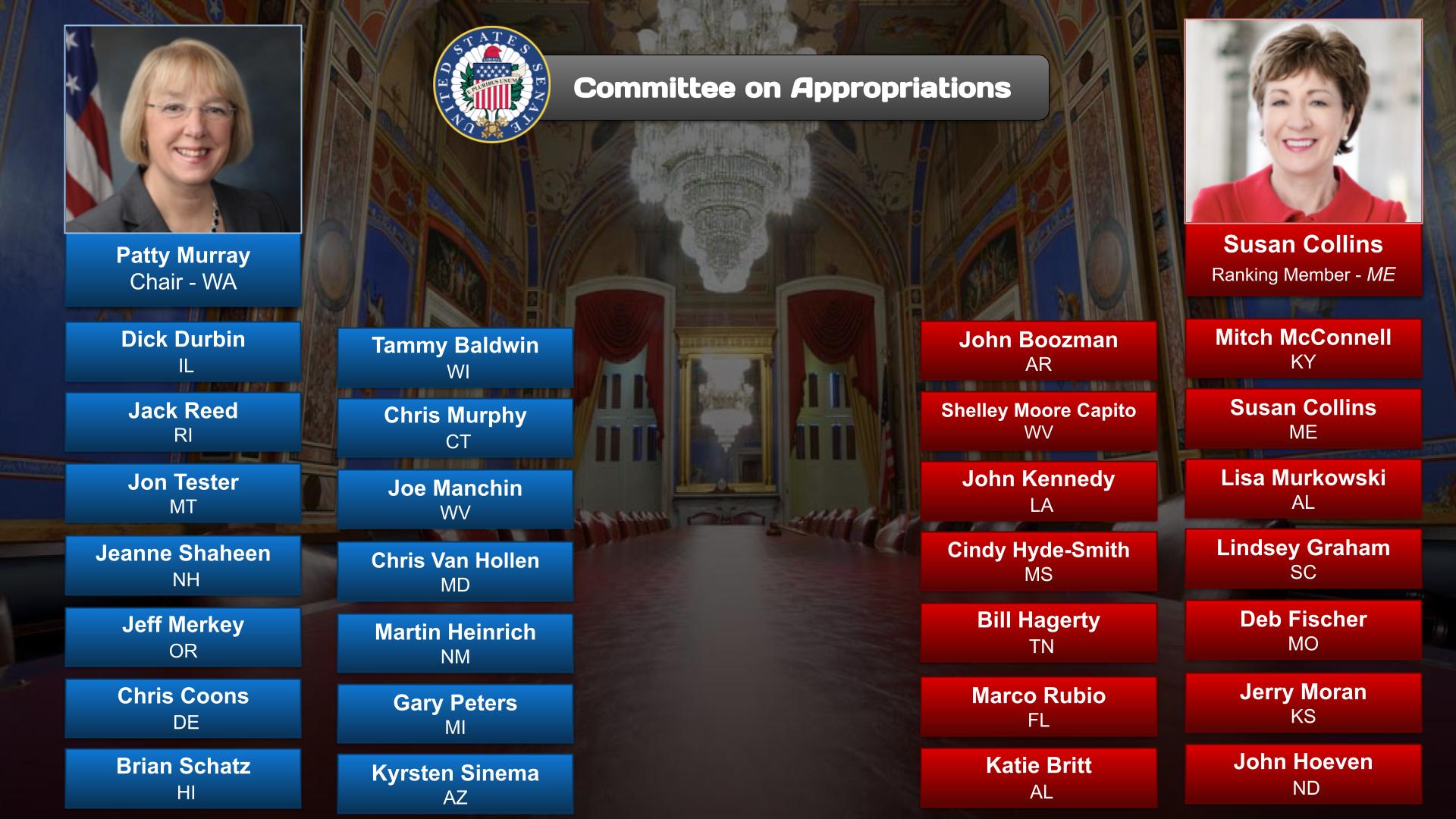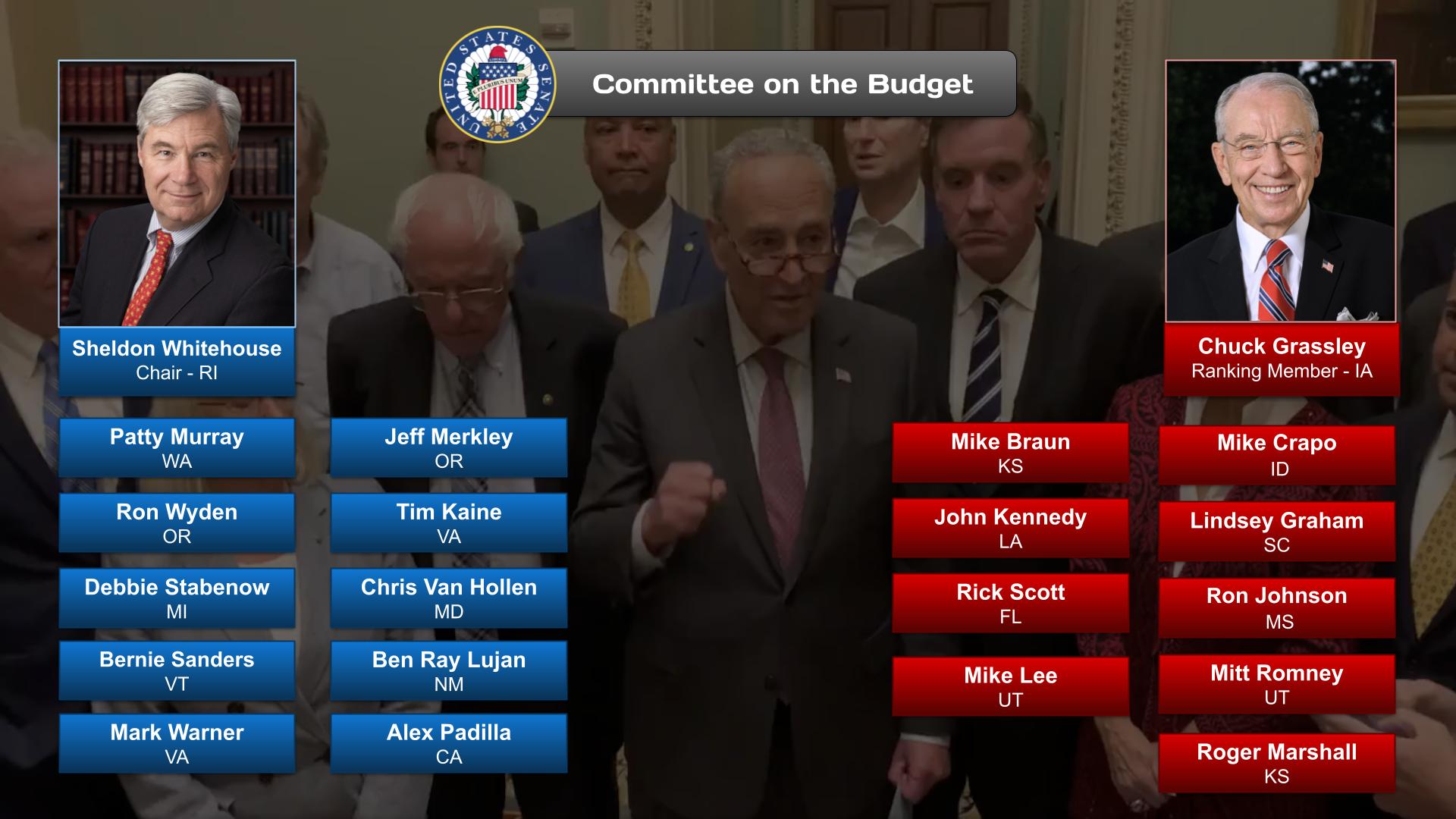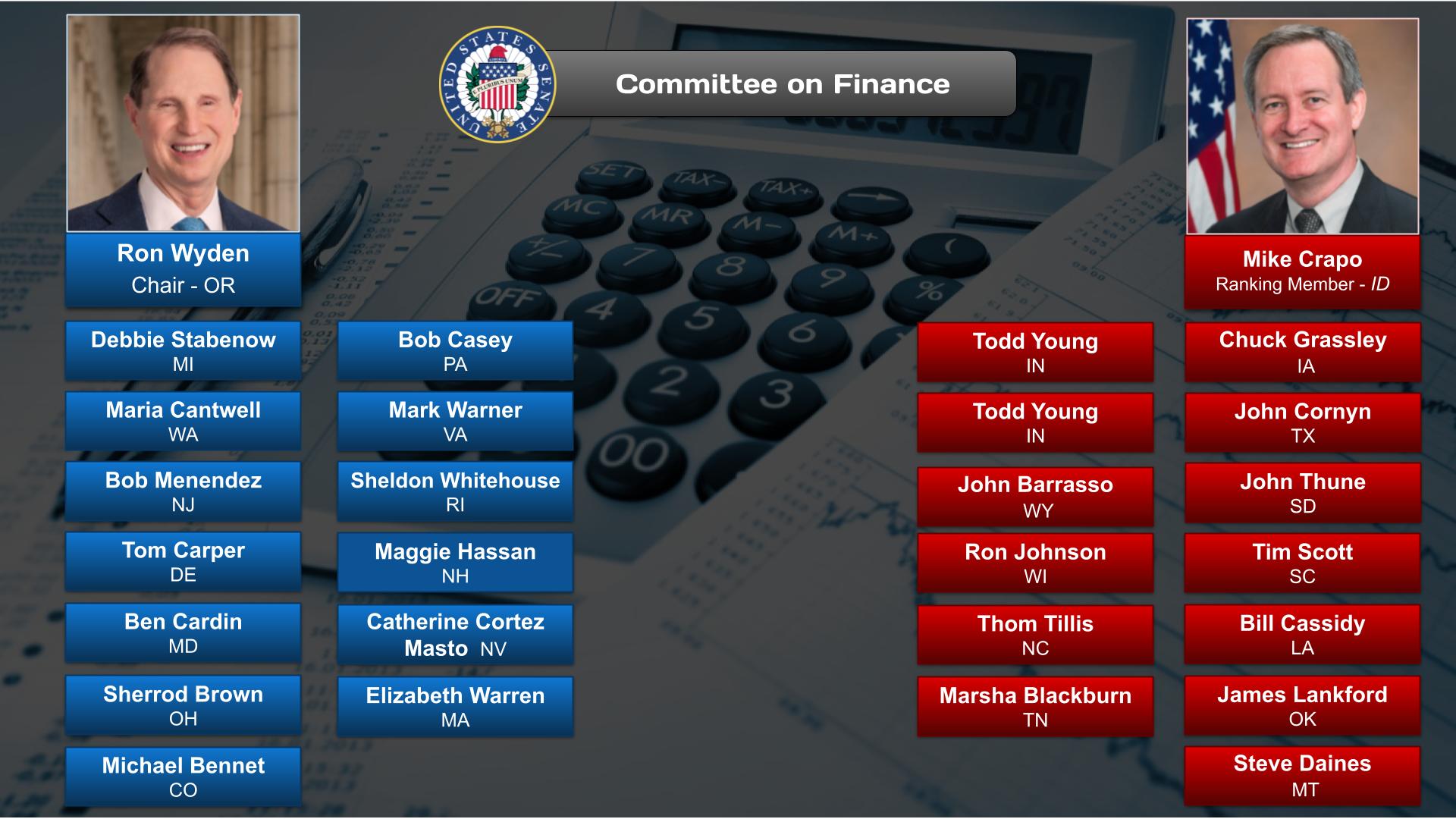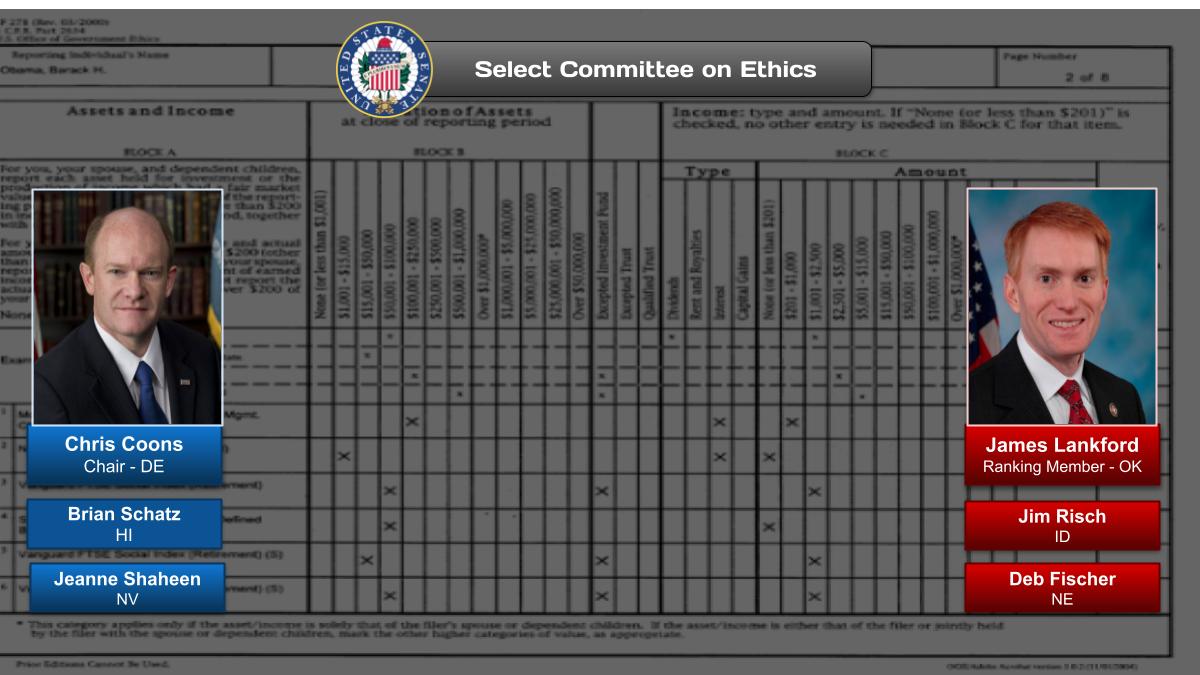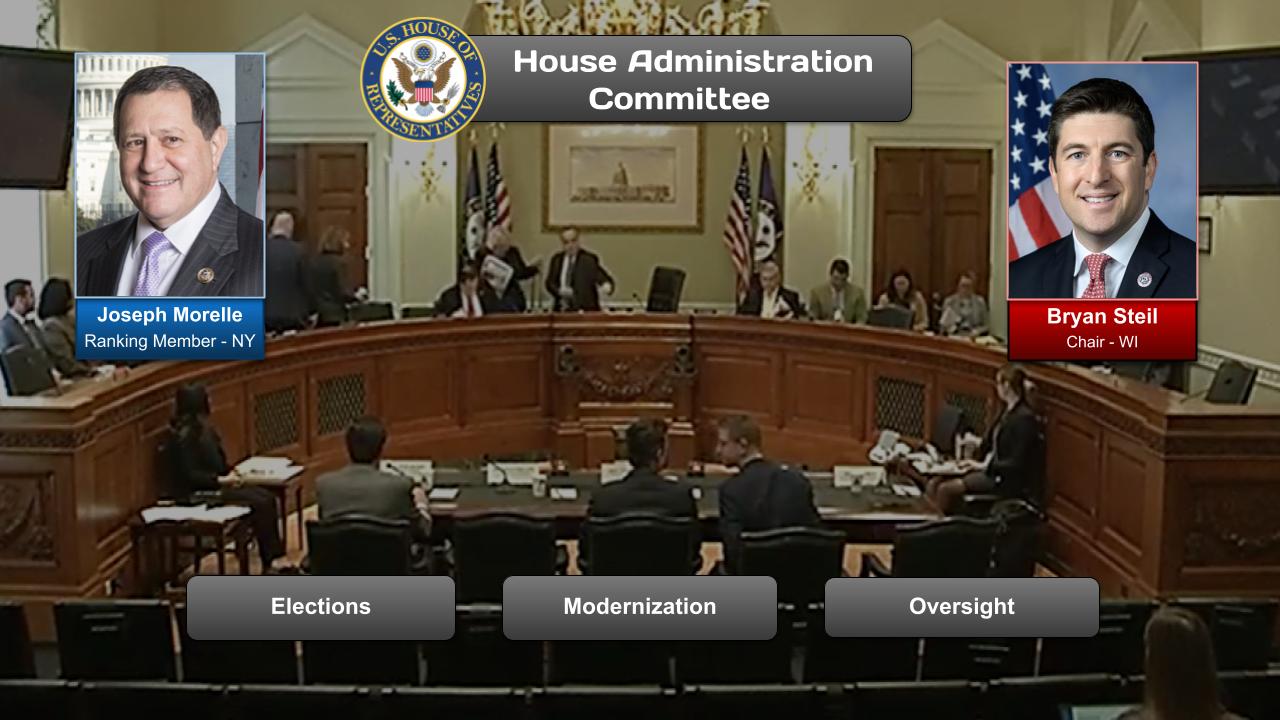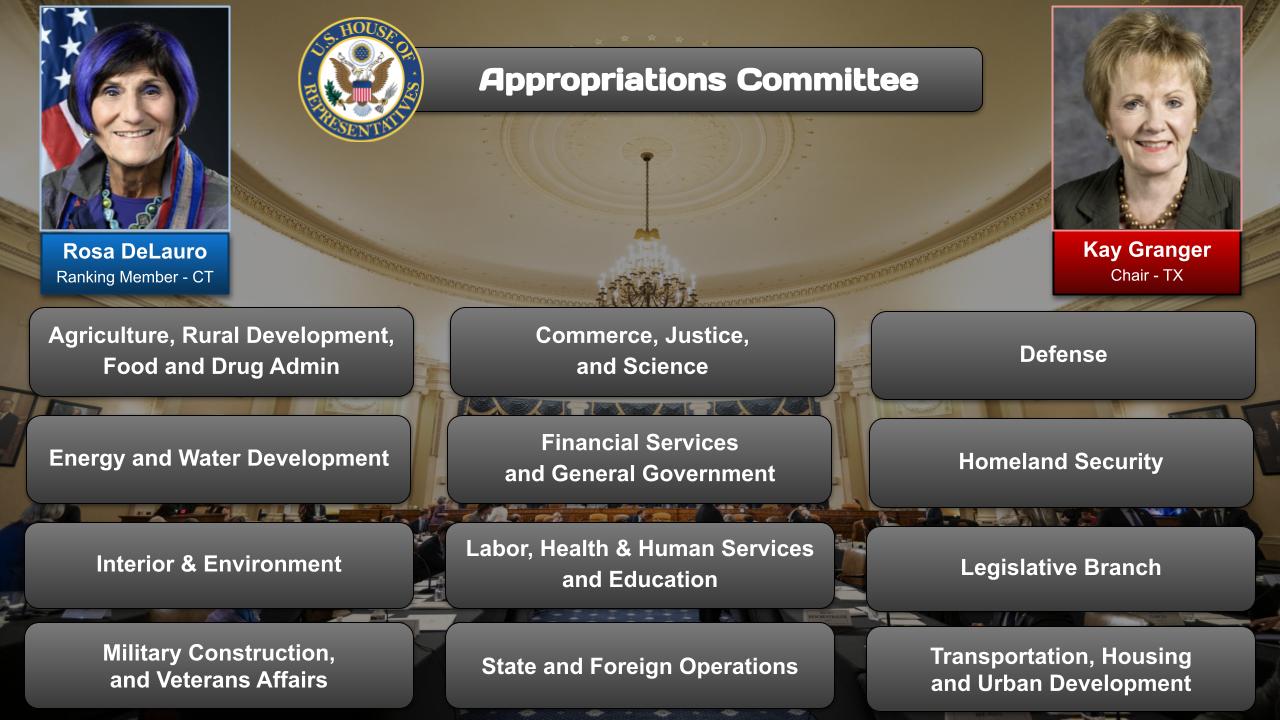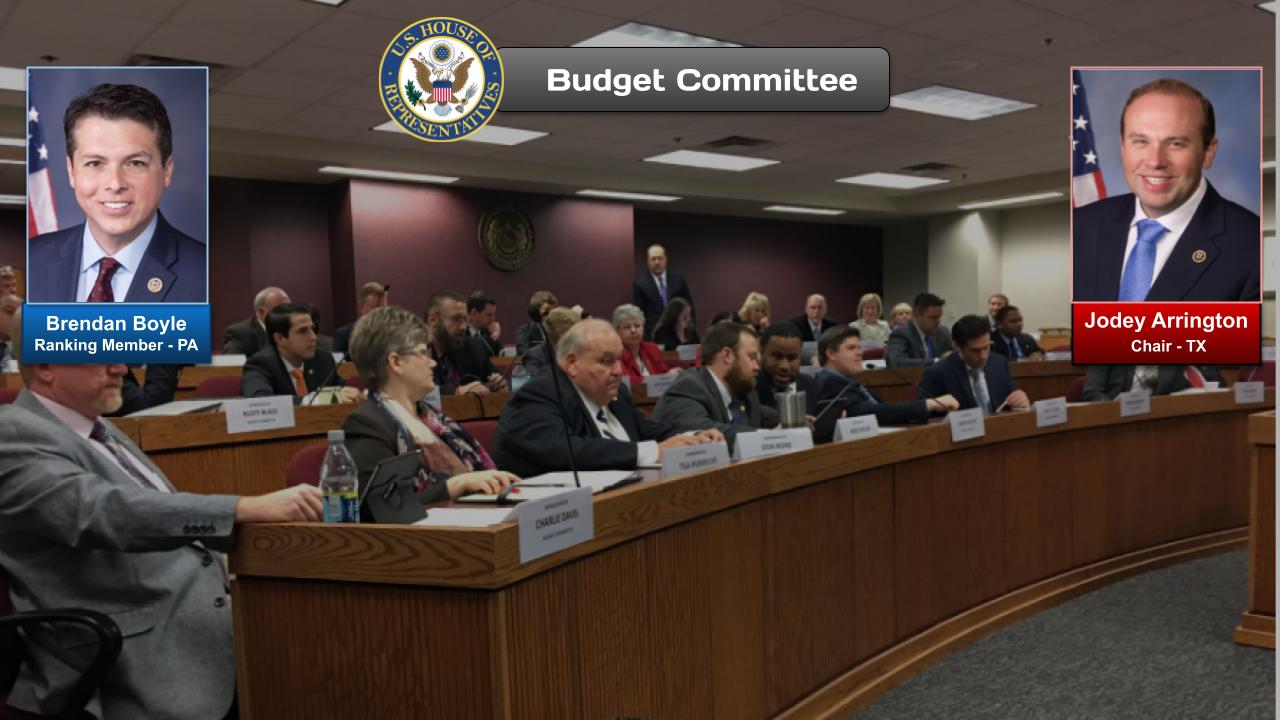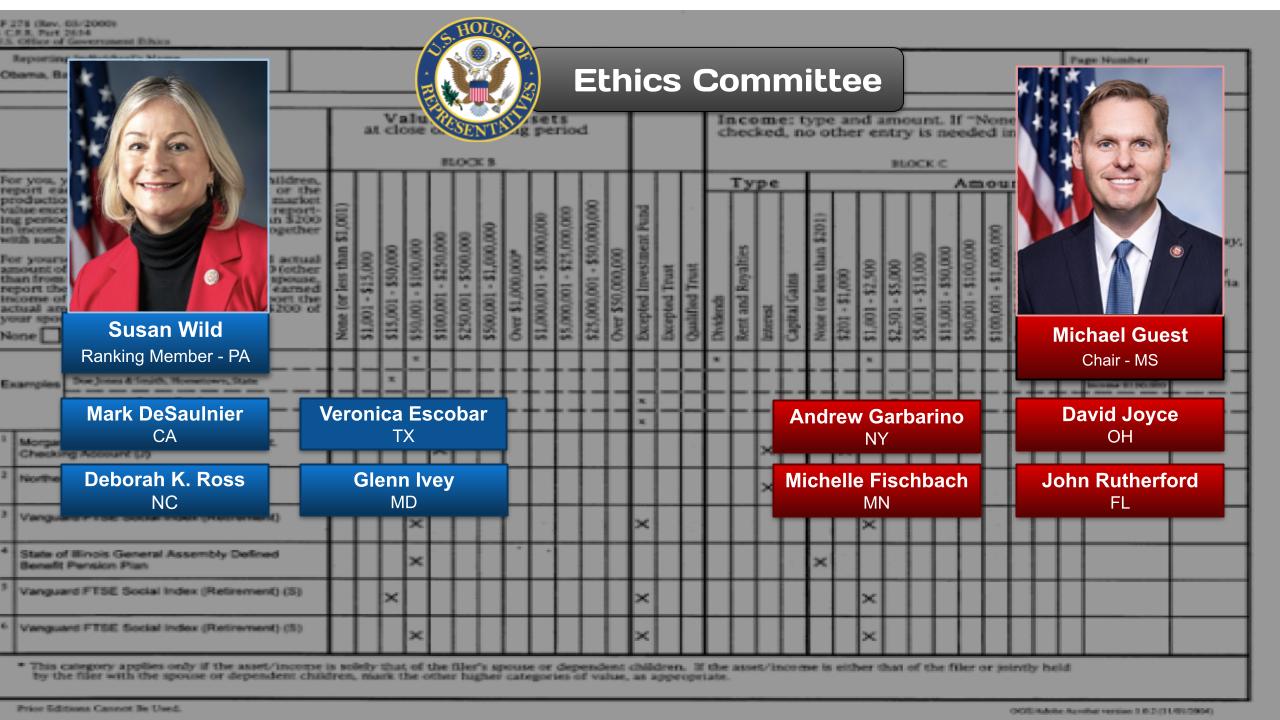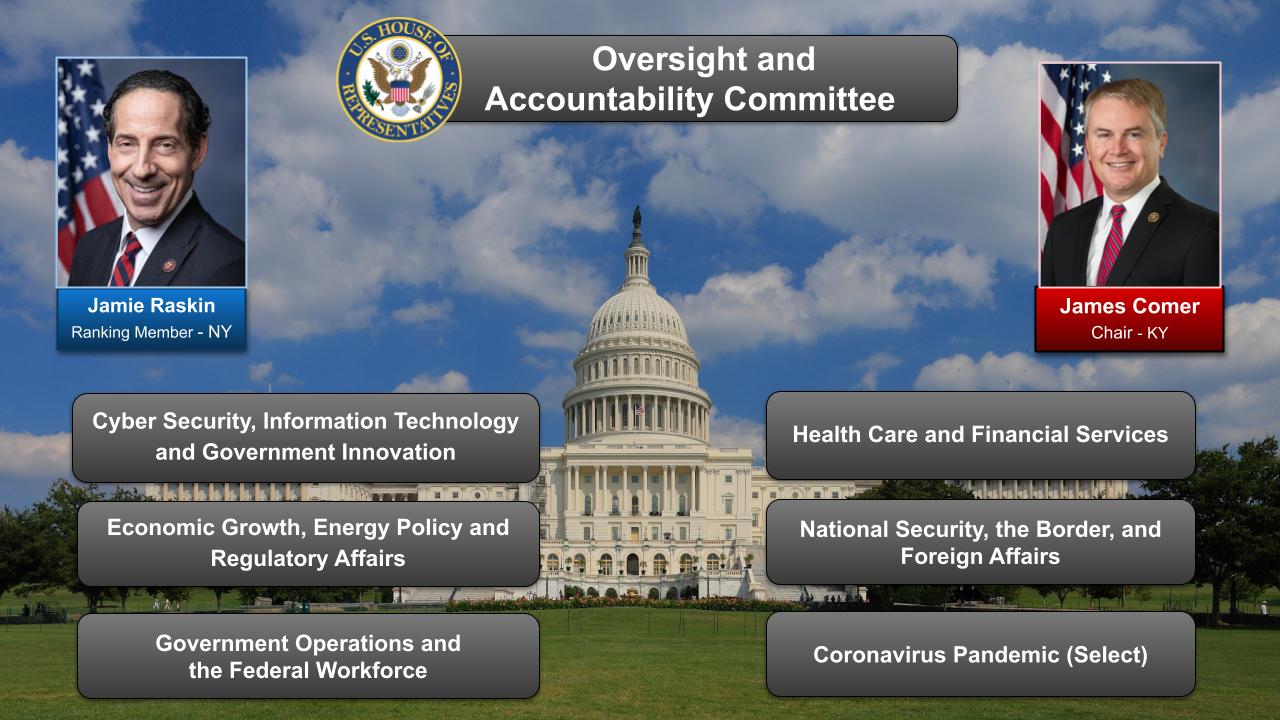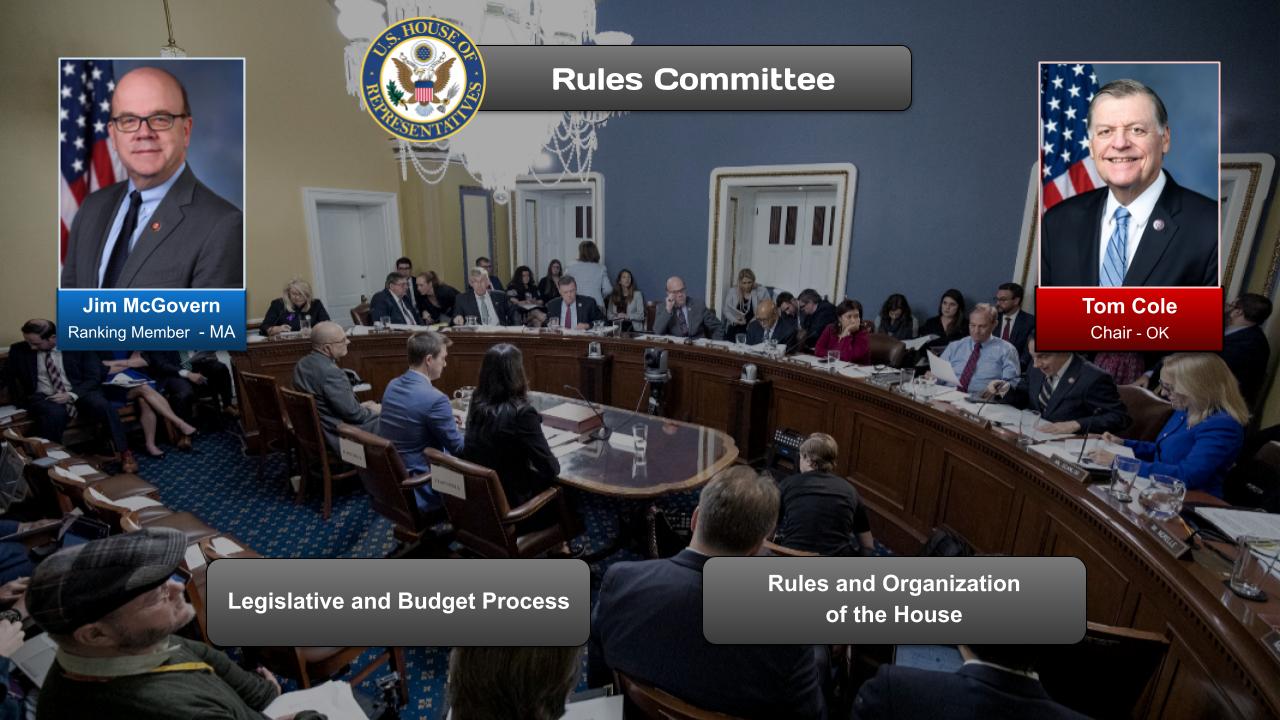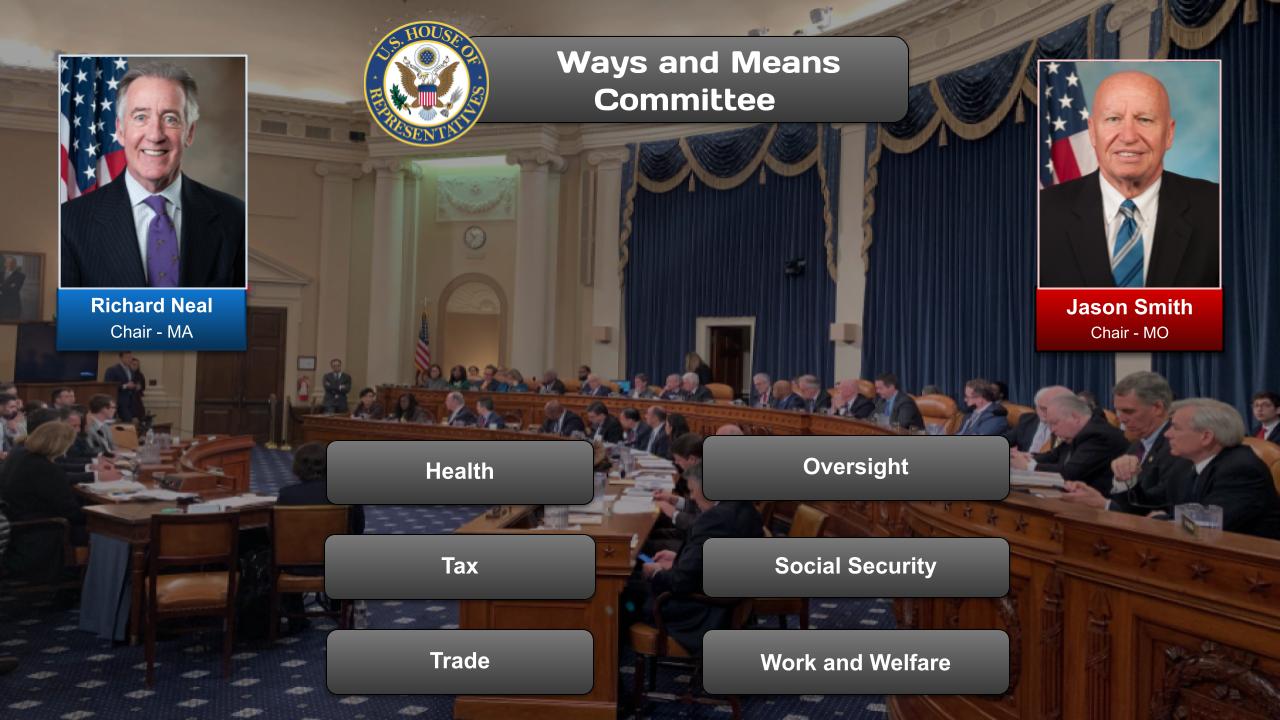Summary
There are many issues related to Governance that Congress is looking to address with legislation.
We have identified three issues for particular focus: Regulations, Deficit & Debt, and Citizen Engagement . This post summarizes the key challenges and solutions around Governance and the ways Congress and the government are addressing themGo to the posts on each issue to learn more about each issue and how Congress is addressing the problems.
In the Discussion section of this post, you can ask our curators questions, make suggestions, and discuss other issues related to Governance not being addressed in the three focused issues.
Sunhak Peace Prize – 03/11/2020 (03:58)
Have you ever wondered what makes good governance? A part of our “What is…” series, “What is good governance?” explores the origin of the concept of governance and the characteristics that make it good. Watch to learn about good governance and see how you can also participate.
OnAir Post: Federal Government
News
PBS NewsHour – March 23, 2024 (02:00)
In our news wrap Saturday, Biden signed a $1.2 trillion spending bill to fund more than half the government through the end of the current budget year, Egypt said about 7,000 aid trucks are being denied entry to Gaza as the UN warns of imminent famine, a Russian spacecraft blasted off from Kazakhstan to take a crew to the ISS, and author and illustrator Laurent de Brunhoff died at age 98.
Brookings , – February 6, 2024
Hearing on the weaponization of the federal government.
The first topic, weaponization of government, is an intensely personal one for me because my family was a victim of the worst weaponization of modern times: the Shoah, the Holocaust. My mother survived Auschwitz, a slave labor camp at Neuengamme, and a death train in the last days of the war. My father was trapped in Warsaw, Poland in 1939, miraculously made his way out and to the United States on the last boat from Greece during World War II in 1940, and then joined the U.S. army to fight that weaponization of government by the Nazis and Axis allies.
Most of the rest of their families did not survive. My maternal grandparents were murdered by weaponization—quite literally—in the gas chambers at Auschwitz. There and across Europe dozens of members of my family were murdered by real weaponization.
For that reason, among others, I have dedicated my professional life to fighting the genuine weaponization of government. When I represented the wrongly accused as a criminal defense lawyer for decades, that is what I was doing. And when I served as the White House ethics czar, as U.S. ambassador, and as counsel to this committee for the first impeachment and trial of President Trump arising out of his pressuring President Volodymyr Zelenskyy, I endeavored to do the same.
About
Overview
Key US Government Issues
Economic
- Inflation: The ongoing high inflation rate is a major concern, with the Consumer Price Index (CPI) rising at its fastest pace in over 40 years.
- Supply chain disruptions: Global supply chains continue to experience disruptions, leading to shortages of essential goods and increased prices.
- Labor market: The labor market is facing both challenges and opportunities, with high job openings but also a shortage of skilled workers.
- Trade deficit: The US trade deficit is at a record high, as imports exceed exports.
- National debt: The US national debt has surpassed $30 trillion and continues to increase.
Social
- Political polarization: The political climate in the US has become increasingly polarized, with both major parties moving further to the extremes.
- Racial and social justice: Systemic racism and social injustice continue to be pervasive issues, sparking protests and calls for reform.
- Gun violence: Mass shootings and other gun-related incidents have become alarmingly frequent in recent years.
- Access to healthcare: Millions of Americans lack affordable healthcare, and healthcare costs continue to rise.
- Homelessness: The number of homeless individuals in the US has increased in recent years, particularly among veterans and people of color.
Environmental
- Climate change: The impacts of climate change are becoming increasingly evident, with rising sea levels, extreme weather events, and wildfires.
- Air pollution: Poor air quality remains a major problem in many cities, posing health risks to residents.
- Water contamination: Water pollution from industrial and agricultural activities threatens drinking water supplies and ecosystems.
- Deforestation: The loss of forests has negative impacts on biodiversity, water quality, and climate regulation.
- Conservation: Endangered species and their habitats face numerous threats, including habitat loss, climate change, and pollution.
Foreign Policy
- Russia-Ukraine war: The ongoing war in Ukraine has significant implications for US foreign policy and global security.
- China: China’s economic and military rise poses both opportunities and challenges for the US.
- Iran: Negotiations over Iran’s nuclear program have stalled, raising concerns about a potential military conflict.
- North Korea: North Korea continues to develop nuclear and missile programs, threatening regional stability.
- Terrorism: Terrorism remains a global threat, with groups like ISIS and Al-Qaeda posing challenges to US security.
Source: Google Search + Gemini + onAir curation
Party positions
Republican Party platform: In 2020, the Republican Party decided not to write a platform for that presidential election cycle, instead simply expressing its support for Donald Trump’s agenda.
- Go here to see a PDF on 2016 Republican Platform.
- Go to this Wikipedia entry to read “Political positions of Donald Trump”.
Democratic Party platform:
- Go here to read the Democratic Party’s plaform on the DNC’s website
- Go to this Wikipedia entry to read the”Political positions of the Democratic Party”
Democratic Party
- Healthcare: Support for universal healthcare, including expansion of Medicaid and Medicare
- Climate Change: Commitment to reduce greenhouse gas emissions and transition to renewable energy sources
- Gun Control: Support for stricter background checks and other measures to reduce gun violence
- Immigration: Path to citizenship for undocumented immigrants and comprehensive immigration reform
- Racial Justice: Address systemic racism through police reform, criminal justice reform, and economic opportunity
- LGBTQ+ Rights: Support for LGBTQ+ rights, including same-sex marriage and transgender equality
- Education: Investment in public education, including affordable college and universal pre-kindergarten
- Taxes: Progressive tax code that requires corporations and wealthy individuals to pay their fair share
Republican Party
- Healthcare: Support for market-based healthcare solutions and opposition to government-run healthcare
- Climate Change: Skepticism towards climate change science and support for fossil fuel industries
- Gun Control: Opposition to most gun control measures, including background checks and assault weapon bans
- Immigration: Support for border security and restrictions on immigration
- Racial Justice: Belief that systemic racism is not a significant issue and opposition to affirmative action
- LGBTQ+ Rights: Opposition to same-sex marriage and transgender equality
- Education: Support for school choice and reduced government involvement in education
- Taxes: Support for lower taxes, particularly on businesses and wealthy individuals
Third Parties
Green Party
- Environmental Protection: Focus on environmental sustainability and climate change mitigation
- Social Justice: Support for progressive social policies, including LGBTQ+ rights, racial justice, and economic equality
- Economic Democracy: Support for worker cooperatives, public ownership of key industries, and a guaranteed minimum wage
- Peace and Non-Violence: Opposition to war and military spending
Libertarian Party
- Individual Liberty: Emphasis on personal freedom and limited government intervention
- Free Markets: Support for free and unregulated markets, including the legalization of drugs
- Civil Liberties: Protection of individual rights, including freedom of speech, assembly, and privacy
- Foreign Policy: Non-interventionist approach to foreign affairs and support for military spending cuts
Source: Google Search + Gemini + onAir curation
Websites
Official Government Websites:
- White House: https://www.whitehouse.gov/
- US Congress: https://www.congress.gov/
- US Senate: https://www.senate.gov/
- US House of Representatives: https://www.house.gov/
- US Department of State: https://www.state.gov/
- US Department of Defense: https://www.defense.gov/
- US Department of Justice: https://www.justice.gov/
- US Department of Homeland Security: https://www.dhs.gov/
- US Environmental Protection Agency: https://www.epa.gov/
- US Centers for Disease Control and Prevention: https://www.cdc.gov/
- US Food and Drug Administration: https://www.fda.gov/
- US Internal Revenue Service: https://www.irs.gov/
- US Social Security Administration: https://www.ssa.gov/
- US Department of Veterans Affairs: https://www.va.gov/
Government Agencies on Specific Issues:
- Federal Election Commission: https://www.fec.gov/ (Campaign finance and electoral issues)
- Federal Trade Commission: https://www.ftc.gov/ (Consumer protection)
- Equal Employment Opportunity Commission: https://www.eeoc.gov/ (Employment discrimination)
- Environmental Protection Agency: https://www.epa.gov/ (Environmental protection)
- National Institutes of Health: https://www.nih.gov/ (Medical research)
- National Aeronautics and Space Administration: https://www.nasa.gov/ (Space exploration)
- Nuclear Regulatory Commission: https://www.nrc.gov/ (Nuclear energy regulation)
- Office of Management and Budget: https://www.whitehouse.gov/omb/ (Federal budget and planning)
- Office of Personnel Management: https://www.opm.gov/ (Federal employee management)
- Securities and Exchange Commission: https://www.sec.gov/ (Securities regulation)
- Small Business Administration: https://www.sba.gov/ (Small business support)
- Transportation Security Administration: https://www.tsa.gov/ (Airport and transportation security)
Government Information Portals:
- USA.gov: https://www.usa.gov/ (General government information)
- FedStats: https://www.fedstats.gov/ (Federal statistics and data)
- Public Inspection Database: https://www.foia.gov/ (Freedom of Information Act requests)
- Code of Federal Regulations: https://www.ecfr.gov/ (Federal regulations)
- Federal Register: https://www.federalregister.gov/ (Daily publication of federal regulations and notices)
Source: Google Search + Gemini + onAir curation
DEPARTMENT & AGENCIES
Departments
Source: Google Search + Gemini + onAir curation
Department of State
- Conducts U.S. foreign policy and diplomacy
- Protects American citizens abroad
- Promotes international peace and security
Department of Defense
- Protects the United States from attack
- Supports allies and partners abroad
- Develops and maintains the military
Department of the Treasury
- Manages the U.S. economy
- Collects federal taxes
- Enforces financial laws
Department of Justice
- Enforces federal laws
- Prosecutes criminals
- Protects civil rights
Department of Homeland Security
- Protects the United States from terrorism
- Enforces immigration and customs laws
- Responds to natural disasters
Department of Health and Human Services
- Promotes public health
- Provides medical assistance to the needy
- Regulates health care
Department of Education
- Supports education from early childhood through college
- Enforces civil rights in education
- Provides financial aid to students
Department of Labor
- Enforces labor laws
- Provides job training and employment assistance
- Protects workers’ rights
Department of Veterans Affairs
- Provides health care and other benefits to veterans
- Administers veterans’ benefits programs
- Supports veterans’ education and employment
Department of Agriculture
- Supports the agricultural industry
- Regulates food safety
- Conserves natural resources
Department of Commerce
- Promotes economic growth
- Supports businesses and entrepreneurs
- Collects economic data
Department of Transportation
- Regulates transportation systems
- Provides funding for transportation infrastructure
- Enforces traffic laws
Agencies
Source: Google Search + Gemini + onAir curation
Legislative Branch:
- Congress (House of Representatives and Senate): Makes laws, holds public hearings, and oversees the executive branch.
- Government Accountability Office (GAO): Audits and investigates government programs and spending.
Judicial Branch:
- Supreme Court: The highest court in the United States that interprets the Constitution and federal laws.
- Federal Courts of Appeals: Reviews decisions made by lower federal courts.
- District Courts: Conduct trials and issue rulings on federal cases.
Independent Agencies:
- Central Intelligence Agency (CIA): Collects and analyzes foreign intelligence.
- Federal Bureau of Investigation (FBI): Investigates federal crimes, such as terrorism, espionage, and organized crime.
- Environmental Protection Agency (EPA): Protects human health and the environment.
- Food and Drug Administration (FDA): Regulates food, drugs, medical devices, and cosmetics.
- Federal Reserve System: Controls the nation’s monetary policy and banking system.
- Social Security Administration (SSA): Provides retirement, disability, and survivors benefits.
Other Important Agencies:
- National Security Agency (NSA): Collects and analyzes global communications data.
- Transportation Security Administration (TSA): Enhances security at airports and other transportation hubs.
- United States Postal Service (USPS): Delivers mail and packages.
- Veterans Affairs (VA): Provides healthcare and other benefits to veterans.
- National Institutes of Health (NIH): Conducts biomedical research.
Committees & Caucuses
Committees
Source: Google Search + Gemini + onAir curation
Appropriations Committees
- House Committee on Appropriations
- Senate Committee on Appropriations
Armed Services Committees
- House Armed Services Committee
- Senate Armed Services Committee
Budget Committees
- House Budget Committee
- Senate Budget Committee
Education and Labor Committees
- House Education and Labor Committee
- Senate Health, Education, Labor, and Pensions Committee
Energy and Commerce Committees
- House Energy and Commerce Committee
- Senate Committee on Energy and Natural Resources
Financial Services Committees
- House Financial Services Committee
- Senate Banking, Housing, and Urban Affairs Committee
Foreign Affairs Committees
- House Foreign Affairs Committee
- Senate Foreign Relations Committee
Government Reform and Oversight Committees
- House Committee on Oversight and Reform
- Senate Homeland Security and Governmental Affairs Committee
Health Committees
- House Committee on Energy and Commerce (Health Subcommittee)
- Senate Health, Education, Labor, and Pensions Committee
Intelligence Committees
- House Permanent Select Committee on Intelligence
- Senate Select Committee on Intelligence
Judiciary Committees
- House Judiciary Committee
- Senate Judiciary Committee
Natural Resources Committees
- House Natural Resources Committee
- Senate Committee on Energy and Natural Resources
Science, Space, and Technology Committees
- House Committee on Science, Space, and Technology
- Senate Committee on Commerce, Science, and Transportation
Small Business Committees
- House Small Business Committee
- Senate Committee on Small Business and Entrepreneurship
Transportation and Infrastructure Committees
- House Transportation and Infrastructure Committee
- Senate Committee on Environment and Public Works
Caucuses
Source: Google Search + Gemini + onAir curation
Agriculture and Rural Issues:
- Congressional Rural Caucus
- House Agriculture Committee
- Senate Agriculture, Nutrition, and Forestry Committee
Budget and Fiscal Policy:
- Congressional Budget Office (CBO)
- House Budget Committee
- Senate Budget Committee
Civil Rights and Liberties:
- Congressional Black Caucus
- Congressional Hispanic Caucus
- Congressional Asian Pacific American Caucus
Defense and National Security:
- Armed Services Committee
- Foreign Affairs Committee
- Senate Armed Services Committee
- Senate Foreign Relations Committee
Education:
- House Education and Labor Committee
- Senate Health, Education, Labor, and Pensions (HELP) Committee
Energy and Environment:
- Energy and Commerce Committee
- House Natural Resources Committee
- Senate Energy and Natural Resources Committee
- Senate Environment and Public Works Committee
Financial Services:
- House Financial Services Committee
- Senate Banking, Housing, and Urban Affairs Committee
Government Reform:
- House Oversight and Reform Committee
- Senate Homeland Security and Governmental Affairs Committee
Healthcare:
- House Energy and Commerce Committee
- Senate Health, Education, Labor, and Pensions (HELP) Committee
Housing and Urban Development:
- House Financial Services Committee
- Senate Banking, Housing, and Urban Affairs Committee
Immigration:
- Congressional Hispanic Caucus
- Congressional Asian Pacific American Caucus
International Relations:
- House Foreign Affairs Committee
- Senate Foreign Relations Committee
Labor and Employment:
- House Education and Labor Committee
- Senate Health, Education, Labor, and Pensions (HELP) Committee
Science and Technology:
- House Science, Space, and Technology Committee
- Senate Commerce, Science, and Transportation Committee
Small Business:
- House Small Business Committee
- Senate Small Business and Entrepreneurship Committee
Transportation:
- House Transportation and Infrastructure Committee
- Senate Commerce, Science, and Transportation Committee
Veterans Affairs:
- House Veterans’ Affairs Committee
- Senate Veterans’ Affairs Committee
More Information
Nonpartisan Organizations
Source: Google Search + Gemini + onAir curation
Brookings Institution
- Focuses on public policy research, with expertise in governance, economics, and foreign policy.
2. Carnegie Endowment for International Peace
- Conducts research and policy analysis on global governance, security, and development.
3. Center for Strategic and International Studies (CSIS)
- Provides analysis and policy recommendations on national security, international relations, and governance.
4. Council on Foreign Relations
- Examines international affairs, foreign policy, and governance through research, publications, and events.
5. Freedom House
- Monitors political rights and civil liberties worldwide, with a focus on governance and human rights.
6. Institute for Government
- Provides nonpartisan research and analysis on government effectiveness, reform, and innovation.
7. National Academy of Public Administration (NAPA)
- Conducts research, develops policy recommendations, and promotes best practices in public governance.
8. Pew Research Center
- Surveys public opinion on a wide range of topics, including governance, politics, and social issues.
9. Rand Corporation
- Provides research and analysis on national security, public policy, and governance, with a focus on evidence-based decision-making.
10. Rockefeller Institute of Government
- Offers programs and research to improve the performance of government agencies and officials.
Partisan Organizations
Source: Google Search + Gemini + onAir curation
Democratic Organizations:
- Democratic National Committee (DNC): The official governing body of the Democratic Party, responsible for organizing and supporting Democratic candidates.
- Democratic Congressional Campaign Committee (DCCC): Assists Democratic candidates in winning House of Representatives elections.
- Democratic Senatorial Campaign Committee (DSCC): Similar to DCCC, but supports Democratic candidates in Senate elections.
- AFL-CIO: A labor union representing over 12 million workers, often aligned with Democratic policies.
- Environmental Defense Fund: A non-profit environmental advocacy organization that supports Democratic environmental initiatives.
Republican Organizations:
- Republican National Committee (RNC): The official governing body of the Republican Party, analogous to the DNC.
- National Republican Congressional Committee (NRCC): The Republican equivalent of the DCCC, supporting Republican House candidates.
- National Republican Senatorial Committee (NRSC): Same as NRCC, but for Senate races.
- Chamber of Commerce of the United States: A business advocacy organization that leans Republican and supports business-friendly policies.
- Americans for Prosperity: A conservative advocacy group that promotes free market principles and limited government.
US Government (Wiki)
| This article is part of a series on the |
| Politics of the United States |
|---|
 |
The federal government of the United States (U.S. federal government or U.S. government)[a] is the national government of the United States, a federal republic located primarily in North America, composed of 50 states, five major self-governing territories, several island possessions, and the federal district and national capital of Washington, D.C., where most of the federal government is based.
The U.S. federal government, sometimes simply referred to as “Washington”, is composed of three distinct branches: legislative, executive, and judicial, whose powers are vested by the U.S. Constitution in the Congress, the president, and the federal courts, respectively.[2] The powers and duties of these branches are further defined by acts of Congress, including the creation of executive departments and courts subordinate to the U.S. Supreme Court.
Naming

The full name of the republic is “United States of America”. No other name appears in the Constitution, and this is the name that appears on money, in treaties, and in legal cases to which the nation is a party. The terms “Government of the United States of America” or “United States Government” are often used in official documents to represent the federal government as distinct from the states collectively.
In casual conversation or writing, the term “Federal Government” is often used, and the term “National Government” is sometimes used. The terms “Federal” and “National” in government agency or program names generally indicate affiliation with the federal government; for instance, the Federal Bureau of Investigation, National Oceanic and Atmospheric Administration, and National Park Service. Because the seat of government is in Washington, D.C., “Washington” is sometimes used as a metonym for the federal government.
History
The United States government is based on the principles of federalism and republicanism, in which power is shared between the national government and state governments. The interpretation and execution of these principles, including what powers the federal government should have and how those powers can be exercised, have been debated ever since the adoption of the Constitution. Some make a case for expansive federal powers while others argue for a more limited role for the central government in relation to individuals, the states, or other recognized entities.
Since the American Civil War, the powers of the federal government have generally expanded greatly, although there have been periods since that time of legislative branch dominance (e.g., the decades immediately following the Civil War) or when states’ rights proponents have succeeded in limiting federal power through legislative action, executive prerogative or by a constitutional interpretation by the courts.[3][4]
One of the theoretical pillars of the U.S. Constitution is the idea of “checks and balances” among the powers and responsibilities of the three branches of American government: the executive, the legislative, and the judiciary. For example, while the legislative branch (Congress) has the power to create law, the executive branch under the president can veto any legislation—an act which, in turn, can be overridden by Congress.[5] The president nominates judges to the nation’s highest judiciary authority, the Supreme Court (as well as to lower federal courts), but those nominees must be approved by Congress. The Supreme Court, in turn, can invalidate unconstitutional laws passed by the Congress. These and other examples are examined in more detail in the text below.
Legislative branch

The United States Congress, under Article I of the Constitution, is the legislative branch of the federal government. It is bicameral, comprising the House of Representatives and the Senate.
Makeup of Congress
House of Representatives

The U.S. House of Representatives is made up of 435 voting members, each of whom represents a congressional district in a state from where they were elected. Apportionment of seats among the 50 states is determined by state populations, and it is updated after each decennial U.S. Census. Each member serves a two-year term.
In order to be elected as a representative, an individual must be at least 25 years of age, must have been a U.S. citizen for at least seven years, and must live in the state that they represent.
In addition to the 435 voting members, there are six non-voting members, consisting of five delegates and one resident commissioner. There is one delegate each from Washington, D.C., Guam, the Virgin Islands, American Samoa, the Commonwealth of the Northern Mariana Islands, and a resident commissioner from Puerto Rico.[6]
Unlike the U.S. Senate, all members of the U.S. House must be elected and cannot be appointed. In the case of a vacancy, the seat must be filled through a special election, as required under Article 1 of the U.S. Constitution.[7]
Senate
In contrast, the Senate is made up of two senators from each state, regardless of population. There are currently 100 senators (2 from each of the 50 states), who each serve six-year terms. Approximately one-third of the Senate stands for election every two years.
If a vacancy occurs, the state governor appoints a replacement to complete the term or to hold the office until a special election can take place.[8]
Separate powers
The House and Senate each have particular exclusive powers. For example, the Senate must approve (give “advice and consent” to) many important presidential appointments, including cabinet officers, federal judges (including nominees to the Supreme Court), department secretaries (heads of federal executive branch departments), U.S. military and naval officers, and ambassadors to foreign countries. All legislative bills for raising revenue must originate in the House of Representatives. The approval of both chambers is required to pass all legislation, which then may only become law by being signed by the president (or, if the president vetoes the bill, both houses of Congress then re-pass the bill, but by a two-thirds majority of each chamber, in which case the bill becomes law without the president’s signature). The powers of Congress are limited to those enumerated in the Constitution; all other powers are reserved to the states and the people.
The Constitution also includes the Necessary and Proper Clause, which grants Congress the power to “make all laws which shall be necessary and proper for carrying into execution the foregoing powers”. Members of the House and Senate are elected by first-past-the-post voting in every state except Louisiana and Georgia, which have runoffs, and Maine and Alaska, which use ranked-choice voting.
Impeachment of federal officers
Congress has the power to remove the president, federal judges, and other federal officers from office. The House of Representatives and Senate have separate roles in this process. The House must first vote to impeach the official. Then, a trial is held in the Senate to decide whether the official should be removed from office. As of 2023, three presidents have been impeached: Andrew Johnson, Bill Clinton, and Donald Trump (twice). None of the three were removed from office following trial in the Senate.[9]
Congressional procedures
Article I, Section 2, paragraph 2 of the U.S. Constitution gives each chamber the power to “determine the rules of its proceedings”. From this provision were created congressional committees, which do the work of drafting legislation and conducting congressional investigations into national matters. The 118th Congress (2023–2025) has 20 standing committees in the House[10] and 19 in the Senate,[11] plus 4 joint permanent committees with members from both houses overseeing the Library of Congress, printing, taxation, and the economy. In addition, each house may name special, or select, committees to study specific problems. Today, much of the congressional workload is borne by the subcommittees, of which there are around 150.
Powers of Congress
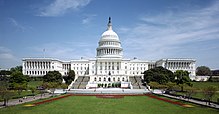
The Constitution grants numerous powers to Congress. Enumerated in Article I, Section 8, these include the powers to levy and collect taxes; to coin money and regulate its value; provide for punishment for counterfeiting; establish post offices and roads, issue patents, create federal courts inferior to the Supreme Court, combat piracies and felonies, declare war, raise and support armies, provide and maintain a navy, make rules for the regulation of land and naval forces, provide for, arm and discipline the militia, exercise exclusive legislation in the District of Columbia, regulate interstate commerce, and to make laws necessary to properly execute powers. Over the two centuries since the United States was formed, many disputes have arisen over the limits on the powers of the federal government. These disputes have often been the subject of lawsuits that have ultimately been decided by the United States Supreme Court.
Congressional oversight
Congressional oversight is intended to prevent waste and fraud, protect civil liberties and individual rights, ensure executive compliance with the law, gather information for making laws and educating the public, and evaluate executive performance.[12]
It applies to cabinet departments, executive agencies, regulatory commissions, and the presidency.
Congress’ oversight function takes many forms:
- Committee inquiries and hearings
- Formal consultations with and reports from the president
- Senate advice and consent for presidential nominations and for treaties
- House impeachment proceedings and subsequent Senate trials
- House and Senate proceedings under the 25th Amendment if the president becomes disabled or if the office of the vice president falls vacant
- Informal meetings between legislators and executive officials
- Congressional membership: each state is allocated a number of seats based on its representation (or ostensible representation, in the case of D.C.) in the House of Representatives. Each state is allocated two senators regardless of its population. As of November 2023, the District of Columbia elects a non-voting representative to the House of Representatives along with American Samoa, the U.S. Virgin Islands, Guam, Puerto Rico, and the Northern Mariana Islands.[13]
Executive branch
President
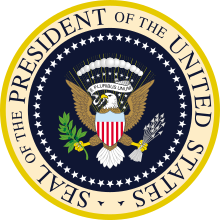

Executive powers and duties
The executive branch is established in Article Two of the United States Constitution, which vests executive power in the president of the United States.[14][15] The president is both the head of state (performing ceremonial functions) and the head of government (the chief executive).[16] The Constitution directs the president to “take care that the laws be faithfully executed“[15] and requires the president to swear or affirm to “preserve, protect and defend the Constitution of the United States.”[17] Legal scholars William P. Marshall and Saikrishna B. Prakash write of the Clause: “the President may neither breach federal law nor order their subordinates to do so, for defiance cannot be considered faithful execution. The Constitution also incorporates the English bars on dispensing or suspending the law, with some supposing that the Clause itself prohibits both.”[18] Many presidential actions are undertaken via executive orders, presidential proclamations, and presidential memoranda.[19]
The president is the commander-in-chief of the armed forces.[15][20] Under the Reception Clause, the president is empowered to “receive Ambassadors and other public Ministers”; the president has broad authority to conduct foreign relations, is generally considered to have the sole power of diplomatic recognition,[15][21] and is the United States’ chief diplomat,[21] although the Congress also has an important role in legislating on foreign affairs,[15][21] and can, for example, “institute a trade embargo, declare war upon a foreign government that the President had recognized, or decline to appropriate funds for an embassy in that country.”[21] The president may also negotiate and sign treaties, but ratifying treaties requires the consent of two-thirds of the Senate.[22]
Article II’s Appointments Clause provides that the president “shall nominate, and by and with the Advice and Consent of the Senate, shall appoint Ambassadors, other public Ministers and Consuls, Judges of the supreme Court, and all other Officers of the United States” while providing that “Congress may by Law vest the Appointment of such inferior Officers, as they think proper, in the President alone, in the Courts of Law, or in the Heads of Departments.”[23] These appointments delegate “by legal authority a portion of the sovereign powers of the federal government.”[24]
The Constitution grants the president the “Power to grant Reprieves and Pardons for Offences against the United States, except in Cases of Impeachment”; this clemency power includes the power to issue absolute or conditional pardons, and to issue commute sentences, to remit fines, and to issue general amnesties.[25] The presidential clemency power extends only to federal crimes, and not to state crimes.[26]
The president has informal powers beyond their formal powers. For example, the president has major agenda-setting powers to influence lawmaking and policymaking,[27] and typically has a major role as the leader of their political party.[28]
Election, succession, and term limits
The president and vice president are normally elected as running mates by the Electoral College; each state has a number of electoral votes equal to the size of its Congressional delegation (i.e., its number of Representatives in the House plus its two senators). The District of Columbia has a number of electoral votes “equal to the whole number of Senators and Representatives in Congress to which the District would be entitled if it were a State, but in no event more than the least populous State”.[14][29] A President may also be seated by succession. As originally drafted, there was no limit to the time a President could serve, however the Twenty-second Amendment, ratified in 1951, originally limits any president to serving two four-year terms (8 years); the amendment specifically “caps the service of a president at 10 years” by providing that “if a person succeeds to the office of president without election and serves less than two years, he may run for two full terms; otherwise, a person succeeding to office of president can serve no more than a single elected term.”[30][31]
Veto power, impeachment, and other issues

Under the Presentment Clause of Article I, a bill that passes both chambers of Congress shall be presented to the president, who may sign the bill into law or veto the bill by returning it to the chamber where it originated.[32] If the president neither signs nor vetoes a bill “within ten Days (Sundays excepted) after it shall have been presented to him” it becomes a law without the president’s signature, “unless the Congress by their Adjournment prevent its Return in which Case it shall not be a Law” (called a pocket veto).[32] A presidential veto may be overridden by a two-thirds vote in both houses of Congress vote to override the veto;[32] this occurs relatively infrequently.[33]
The president may be impeached by a majority in the House and removed from office by a two-thirds majority in the Senate for “treason, bribery, or other high crimes and misdemeanors“.
The president may not dissolve Congress, but has the power to adjourn Congress whenever the House and Senate cannot agree when to adjourn; no president has ever used this power.[18] The president also has the constitutional power to, “on extraordinary Occasions, convene both Houses, or either of them”; this power has been used “to consider nominations, war, and emergency legislation.”[18] This Section invests the President with the discretion to convene Congress on “extraordinary occasions”; this special session power that has been used to call the chambers to consider urgent matters.[18]
Vice president

The vice president is the second-highest official in rank of the federal government. The vice president’s duties and powers are established in the legislative branch of the federal government under Article 1, Section 3, Clauses 4 and 5 as the president of the Senate; this means that they are the designated presiding officer of the Senate. In that capacity, the vice president has the authority (ex officio, for they are not an elected member of the Senate) to cast a tie-breaking vote. Pursuant to the Twelfth Amendment, the vice president presides over the joint session of Congress when it convenes to count the vote of the Electoral College. As first in the U.S. presidential line of succession, the vice president’s duties and powers move to the executive branch when becoming president upon the death, resignation, or removal of the president, which has happened nine times in U.S. history. Lastly, in the case of a Twenty-fifth Amendment succession event, the vice president would become acting president, assuming all of the powers and duties of president, except being designated as president. Accordingly, by circumstances, the Constitution designates the vice president as routinely in the legislative branch, or succeeding to the executive branch as president, or possibly being in both as acting president pursuant to the Twenty-fifth Amendment. Because of circumstances, the overlapping nature of the duties and powers attributed to the office, the title of the office and other matters, such has generated a spirited scholarly dispute regarding attaching an exclusive branch designation to the office of vice president.[34][35]
Cabinet, executive departments, and agencies
Article II, Section 2 of the Constitution sets forth the creation of a presidential Cabinet. The role of the Cabinet is to advise the president and carry out the programs and laws of the federal government. The Cabinet is composed of the vice president and the leaders of 15 executive departments. Those executive departments are the Departments of State, Treasury, Defense, Justice, Interior, Agriculture, Commerce, Labor, Health and Human Services, Housing and Urban Development, Transportation, Energy, Education, Veterans Affairs, and Homeland Security.[36]
Additionally, there are seven other members of the Cabinet who are appointed by the president. These are the White House Chief of Staff, Administrator of the Environmental Protection Agency, Director of the Office of Management & Budget, United States Trade Representative, U.S. Ambassador to the United Nations, Chairman of the Council of Economic Advisers, and Administrator of the Small Business Administration.[37]
The heads of the 15 departments are chosen by the president and approved with the “advice and consent” of the U.S. Senate. Once confirmed, these “Cabinet secretaries” serve at the pleasure of the president.
In addition to the executive departments, a number of staff organizations are grouped into the Executive Office of the President (EOP), which was created in 1939 by President Franklin D. Roosevelt.[37] The EOP is overseen by the White House Chief of Staff. The EOP includes the White House staff, the National Security Council, the Office of Management and Budget, the Council of Economic Advisers, the Council on Environmental Quality, the Office of the U.S. Trade Representative, the Office of National Drug Control Policy, and the Office of Science and Technology Policy.
Outside of the EOP and the executive departments are a number of independent agencies. These include the United States Postal Service (USPS), NASA, the Central Intelligence Agency (CIA), the Environmental Protection Agency (EPA), and the United States Agency for International Development (USAID). In addition, there are government-owned corporations, including the Federal Deposit Insurance Corporation and the National Railroad Passenger Corporation.
Judicial branch
The Judiciary, under Article III of the Constitution, explains and applies the laws. This branch does this by hearing and eventually making decisions on various legal cases.
Overview of the federal judiciary

Article III section I of the Constitution establishes the Supreme Court of the United States and authorizes the United States Congress to establish inferior courts as their need shall arise. Section I also establishes a lifetime tenure for all federal judges and states that their compensation may not be diminished during their time in office. Article II section II establishes that all federal judges are to be appointed by the president and confirmed by the United States Senate.
The Judiciary Act of 1789 subdivided the nation jurisdictionally into judicial districts and created federal courts for each district. The three tiered structure of this act established the basic structure of the national judiciary: the Supreme Court, 13 courts of appeals, 94 district courts, and two courts of special jurisdiction. Congress retains the power to re-organize or even abolish federal courts lower than the Supreme Court.
The U.S. Supreme Court decides cases and controversies, which include matters pertaining to the federal government, disputes between states, and interpretation of the United States Constitution, and, in general, can declare legislation or executive action made at any level of the government as unconstitutional, nullifying the law and creating precedent for future law and decisions. The United States Constitution does not specifically mention the power of judicial review, which is the power to declare a law unconstitutional. There have been instances in the past where such declarations have been ignored by the other two branches. Below the U.S. Supreme Court are the United States Courts of Appeals, and below them in turn are the United States District Courts, which are the general trial courts for federal law, and for certain controversies between litigants who are not deemed citizens of the same state, known as diversity jurisdiction.
There are three levels of federal courts with general jurisdiction, which are courts that handle both criminal and civil suits between individuals. Other courts, such as the bankruptcy courts and the U.S. Tax Court, are specialized courts handling only certain kinds of cases, known as subject matter jurisdiction. The Bankruptcy Courts are supervised by the district courts, and, as such, are not considered part of the Article III judiciary. As such, their judges do not have lifetime tenure, nor are they Constitutionally exempt from diminution of their remuneration.[38] The Tax Court is an Article I Court, not an Article III Court.[39]
The district courts are the trial courts wherein cases that are considered under the Judicial Code (Title 28, United States Code) consistent with the jurisdictional precepts of federal question jurisdiction, diversity jurisdiction, and pendent jurisdiction can be filed and decided. The district courts can also hear cases under removal jurisdiction, wherein a case brought in a state court meets the requirements for diversity jurisdiction, and one party litigant chooses to “remove” the case from state court to federal court.
The United States Courts of Appeals are appellate courts that hear appeals of cases decided by the district courts, and some direct appeals from administrative agencies, and some interlocutory appeals. The U.S. Supreme Court hears appeals from the decisions of the courts of appeals or state supreme courts, and in addition has original jurisdiction over a few cases.
The judicial power extends to cases arising under the Constitution, an Act of Congress; a U.S. treaty; cases affecting ambassadors, ministers and consuls of foreign countries in the U.S.; cases and controversies to which the federal government is a party; controversies between states (or their citizens) and foreign nations (or their citizens or subjects); and bankruptcy cases (collectively “federal-question jurisdiction”). The Eleventh Amendment removed from federal jurisdiction cases in which citizens of one state were the plaintiffs and the government of another state was the defendant. It did not disturb federal jurisdiction in cases in which a state government is a plaintiff and a citizen of another state the defendant.
The power of the federal courts extends both to civil actions for damages and other redress, and to criminal cases arising under federal law. The interplay of the Supremacy Clause and Article III has resulted in a complex set of relationships between state and federal courts. Federal courts can sometimes hear cases arising under state law pursuant to diversity jurisdiction, state courts can decide certain matters involving federal law, and a handful of federal claims are primarily reserved by federal statute to the state courts. Both court systems have exclusive jurisdiction in some areas and concurrent jurisdiction in others.
The U.S. Constitution safeguards judicial independence by providing that federal judges shall hold office “during good behavior”; in practice, this usually means they serve until they die, retire, or resign. A judge who commits an offense while in office may be impeached in the same way as the president or other officials of the federal government. U.S. judges are appointed by the president, subject to confirmation by the Senate. Another Constitutional provision prohibits Congress from reducing the pay of any present Article III judge. However, Congress is able to set a lower salary for all future judges who take office after such a pay reduction is passed by Congress.
Relationships between state and federal courts
Separate from, but not entirely independent of, this federal court system are the court systems of each state, each dealing with, in addition to federal law when not deemed preempted, a state’s own laws, and having its own court rules and procedures. Although state governments and the federal government are legally dual sovereigns, the Supreme Court of the United States is in many cases the appellate court from the State Supreme Courts (e.g., absent the Court countenancing the applicability of the doctrine of adequate and independent State grounds). The Supreme Courts of each state are by this doctrine the final authority on the interpretation of the applicable state’s laws and Constitution. Many state constitution provisions are equal in breadth to those of the U.S. Constitution, but are considered “parallel” (thus, where, for example, the right to privacy pursuant to a state constitution is broader than the federal right to privacy, and the asserted ground is explicitly held to be “independent”, the question can be finally decided in a State Supreme Court—the U.S. Supreme Court will decline to take jurisdiction).
A State Supreme Court, other than of its own accord, is bound only by the U.S. Supreme Court’s interpretation of federal law, but is not bound by interpretation of federal law by the federal court of appeals for the federal circuit in which the state is included, or even the federal district courts located in the state, a result of the dual sovereigns concept. Conversely, a federal district court hearing a matter involving only a question of state law (usually through diversity jurisdiction) must apply the substantive law of the state in which the court sits, a result of the application of the Erie Doctrine; however, at the same time, the case is heard under the Federal Rules of Civil Procedure, the Federal Rules of Criminal Procedure and the Federal Rules of Evidence instead of state procedural rules (that is, the application of the Erie Doctrine only extends to a requirement that a federal court asserting diversity jurisdiction apply substantive state law, but not procedural state law, which may be different). Together, the laws of the federal and state governments form U.S. law.
Budget


The budget document often begins with the president‘s proposal to Congress recommending funding levels for the next fiscal year, beginning October 1 and ending on September 30 of the year following. The fiscal year refers to the year in which it ends.
For fiscal year (FY) 2018, the federal government spent $4.11 trillion. Spending equalled 20.3% of gross domestic product (GDP), equal to the 50-year average.[40] The deficit equaled $779 billion, 3.8 percent of GDP. Tax revenue amounted to $3.33 trillion, with receipt categories including individual income taxes ($1,684B or 51%), Social Security/Social Insurance taxes ($1,171B or 35%), and corporate taxes ($205B or 6%).[40]
Employees
The United States federal government had about 2,260,000 civilian employees in FY2023, with about 160,000 of those in the District of Columbia (not counting the United States Postal Service).[41]
Elections and voting
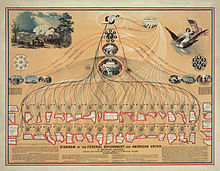
Suffrage, known as the ability to vote, has changed significantly over time. In the early years of the United States, voting was considered a matter for state governments, and was commonly restricted to white men who owned land. Direct elections were mostly held only for the U.S. House of Representatives and state legislatures, although what specific bodies were elected by the electorate varied from state to state. Under this original system, both senators representing each state in the U.S. Senate were chosen by a majority vote of the state legislature. Since the ratification of the Seventeenth Amendment in 1913, members of both houses of Congress have been directly elected. Today, U.S. citizens have almost universal suffrage under equal protection of the laws[42] from the age of 18,[43] regardless of race,[44] gender,[45] or wealth.[46] The only significant exception to this is the disenfranchisement of convicted felons, and in some states former felons as well.
Under the U.S. Constitution, the representation of U.S. territories and the federal district of District of Columbia in Congress is limited: while residents of the District of Columbia are subject to federal laws and federal taxes, their only congressional representative is a non-voting delegate; however, they have participated in presidential elections since March 29, 1961.[47]
Residents of Puerto Rico other than federal employees do not pay federal personal income taxes on income that has its source in Puerto Rico,[48][49] and do not pay most federal excise taxes (for example, the federal gasoline tax);[49] however, Puerto Ricans pay all other federal taxes, including the federal payroll taxes that fund Social Security and Medicare; the FUTA tax; and business, gift, and estate taxes.[49][48] Puerto Rico is represented in the Congress by a nonvoting Resident Commissioner, a nonvoting delegate.[50]
State, tribal, and local governments
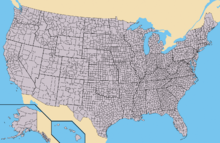
State governments have the greatest influence over most Americans’ daily lives. The Tenth Amendment prohibits the federal government from exercising any power not delegated to it by the Constitution; as a result, states handle the majority of issues most relevant to individuals within their jurisdiction. Because state governments are not authorized to print currency, they generally have to raise revenue through either taxes or bonds. As a result, state governments tend to impose severe budget cuts or raise taxes any time the economy is faltering.[51]
Each state has its own written constitution, government and code of laws. The Constitution stipulates only that each state must have, “a Republican Government”. Therefore, there are often great differences in law and procedure between individual states, concerning issues such as property, crime, health and education, amongst others. The highest elected official of each state is the Governor, with below him being the Lieutenant Governor. Each state also has an elected state legislature (bicameralism is a feature of every state except Nebraska), whose members represent the voters of the state. Each state maintains its own state court system. In some states, supreme and lower court justices are elected by the people; in others, they are appointed, as they are in the federal system.
As a result of the Supreme Court case Worcester v. Georgia, American Indian tribes are considered “domestic dependent nations” that operate as sovereign governments subject to federal authority but, in some cases, outside of the jurisdiction of state governments. Hundreds of laws, executive orders and court cases have modified the governmental status of tribes vis-à-vis individual states, but the two have continued to be recognized as separate bodies. Tribal governments vary in robustness, from a simple council used to manage all aspects of tribal affairs, to large and complex bureaucracies with several branches of government. Tribes are currently encouraged to form their own governments, with power resting in elected tribal councils, elected tribal chairpersons, or religiously appointed leaders (as is the case with pueblos). Tribal citizenship and voting rights are typically restricted to individuals of native descent, but tribes are free to set whatever citizenship requirements they wish.
The institutions that are responsible for local government within states are typically counties, municipalities, and special-purpose districts, which make laws that affect their particular area. These laws concern issues such as traffic, the sale of alcohol and the keeping of animals. A county is an administrative or political subdivision of a state, while Louisiana and Alaska have county-equivalent subdivisions called parishes and boroughs, respectively. The specific governmental powers of counties vary widely between the states, with those in Connecticut, Rhode Island, and some parts of Alaska and Massachusetts having little or no power, existing only as geographic distinctions. In other areas, county governments have more power, such as to collect taxes and maintain law enforcement agencies. Twenty states further divide their counties into civil townships. Population centers may be organized into incorporated municipalities of several types, including the city, town, borough, and village. These municipal entities also vary from state to state, and typically subordinate to the government of a county or civil township. However, many rural and suburban regions are in unincorporated areas that have no municipal government below the county or civil township level. Certain cities have consolidated with their county government to form consolidated city-counties, or have been legally separated from counties altogether to form independent cities. States may also create special-purpose districts that perform a single function or a set of related functions within an area inside one or more counties or municipalities, like school districts, water management districts, fire management districts, and library districts.
See also
PresidentCourts | LawAgencies | States and territoriesWorks and websites
|
Notes
- ^ The U.S. Government Publishing Office specifies the capitalization of Federal Government, in regards to the national government of the United States, as a proper noun.[1]
References
- ^ “3” (PDF). U.S. Government Publishing Office Style Manual (2016 ed.). U.S. Government Publishing Office. 2016. p. 32. ISBN 978-0-16-093601-2. Archived (PDF) from the original on July 29, 2018. Retrieved July 29, 2018.
- ^ “Government structure”. USAFacts. Retrieved February 10, 2024.
- ^ Ford, Henry Jones (1908). “The Influence of State Politics in Expanding Federal Power”. Proceedings of the American Political Science Association. 5: 53–63. doi:10.2307/3038511. JSTOR 3038511.
- ^ Judge Rules Favorably in Pennsylvania BRAC Suit (Associated Press, August 26)[permanent dead link]
- ^ “The Legislative Branch”. whitehouse.gov. Archived from the original on January 29, 2022. Retrieved January 20, 2013 – via National Archives.
- ^ “Member Web Site Listing (by State)”. U.S. House. Archived from the original on August 28, 2008. Retrieved August 17, 2008.
- ^ “Article I. Constitution of the United States of America”. Illinois General Assembly. Retrieved February 23, 2023.
- ^ “Appointed Senators (1913-Present)”. United States Senate. Retrieved February 23, 2023.
- ^ “Trump impeachment: A very simple guide”. BBC News. December 19, 2019. Archived from the original on December 19, 2019. Retrieved February 11, 2022.
- ^ “Committees”. house.gov. Retrieved November 23, 2023.
- ^ “Committees”. U.S. Senate. Retrieved November 23, 2023.
- ^ Kaiser, Frederick M. (January 3, 2006). “Congressional Oversight” (PDF). Congressional Research Service. Archived (PDF) from the original on July 25, 2008. Retrieved July 30, 2008.
- ^ “Directory of Representatives”. house.gov. Retrieved November 23, 2023.
- ^ a b “Constitution of the United States of America”. 1787. “Article II” – via Wikisource.
- ^ a b c d e “Nature and Scope of Presidential Power”. U.S. Constitution Annotated. Congressional Research Service. Archived from the original on January 23, 2021. Retrieved February 15, 2021 – via Cornell Law School, Legal Information Institute.
- ^ Daniel W. Drezner (August 4, 2019). “America’s head of state, M.I.A.” Washington Post. Archived from the original on December 16, 2020. Retrieved February 15, 2021.
- ^ “Article 2, Section I, Clause 8: Oath of Office”. U.S. Constitution Annotated. Congressional Research Service. Archived from the original on February 10, 2021. Retrieved February 15, 2021 – via Cornell Law School, Legal Information Institute.
- ^ a b c d William P. Marshall & Saikrishna B. Prakash, Article II, Section 3: Common Interpretation Archived February 17, 2021, at the Wayback Machine, National Constitution Center (2021).
- ^ “Executive Order, Proclamation, or Executive Memorandum?”. Executive Orders: A Beginner’s Guide. Library of Congress Research Guide. 2020. Archived from the original on February 7, 2021. Retrieved February 15, 2021.
- ^ “ArtII.S2.C1.1.2 Commander in Chief Power: Doctrine and Practice”. Constitution of the United States of America: Analysis and Interpretation. Congressional Research Service. Archived from the original on January 6, 2021. Retrieved February 15, 2021.
- ^ a b c d Wilfred E. Binkley (1959). The Man in the White House: His Powers and Duties (paperback 2009 ed.). Johns Hopkins University Press. pp. 247–57.
- ^ “ArtII.S2.C2.1 The Treaty Making Power”. Constitution of the United States of America: Analysis and Interpretation. Congressional Research Service. Archived from the original on January 31, 2021. Retrieved February 15, 2021.
- ^ “ArtII.S2.C2.2.1.1 Appointing Ambassadors, Ministers, and Consuls”. Constitution of the United States of America: Analysis and Interpretation. Congressional Research Service. Archived from the original on February 27, 2021. Retrieved February 15, 2021.
- ^ Steven G. Bradbury (April 16, 2007). Offices of the United States Within the Meaning of the Appointments Clause (PDF). United States Department of Justice Office of Legal Counsel. Archived (PDF) from the original on February 21, 2021. Retrieved February 15, 2021.
- ^ “ArtII.S2.C1.3.1.1 Scope of the Pardon Power”. Constitution of the United States of America: Analysis and Interpretation. Congressional Research Service. Archived from the original on January 27, 2021. Retrieved February 15, 2021.
- ^ Lauren-Brooke Eisen, Hernandez Stroud & Josh Bell (January 9, 2021). “Explainer: Presidential Pardon Power Explained”. Brennan Center for Justice. Archived from the original on February 3, 2021. Retrieved February 15, 2021.
- ^ Paul E. Rutledge; Heather A. Larsen (August 2014). “The President as Agenda Setter‐in‐Chief: The Dynamics of Congressional and Presidential Agenda Setting”. Policy Studies Journal. 42 (3): 443–464. doi:10.1111/psj.12068. Archived from the original on April 23, 2021. Retrieved February 15, 2021.
- ^ James W. Davis (1992). The President as Party Leader. Praeger.
- ^ Amendment XXIII to the United States Constitution
- ^ Amendment XXII to the United States Constitution
- ^ Michael Levy, Twenty-second Amendment: United States Constitution Archived April 16, 2021, at the Wayback Machine, Encyclopædia Britannica (2010).
- ^ a b c “U.S. Constitution, Article I, Section 7, Clauses 1–3: The Legislative Process”. Legal Information Institute. Archived from the original on January 22, 2021. Retrieved February 15, 2021.
- ^ “Presidential Vetoes: Washington to Biden”. American Presidency Project. University of California, Santa Barbara. January 8, 2021. Archived from the original on February 27, 2021. Retrieved February 15, 2021.
- ^ Goldstein, Joel K. (1995). “The New Constitutional Vice Presidency”. Wake Forest Law Review. 30 (505).
- ^ Reynolds, Glenn Harlan (2007). “Is Dick Cheney Unconstitutional?”. Northwestern University Law Review Colloquy. 102 (110).
- ^ “The Cabinet”. whitehouse.gov. December 9, 2014. Retrieved March 1, 2023.
- ^ a b “The Executive Branch”. The White House. Retrieved March 1, 2023.
- ^ Federal tribunals in the United States
- ^ United States Tax Court
- ^ a b “CBO Monthly Budget Review-November 2018”. November 7, 2018. Archived from the original on December 5, 2018. Retrieved December 6, 2018.
- ^ “FedScope Federal Human Resources Data”. U.S. Office of Personnel Management. Retrieved March 11, 2024.
- ^ Fourteenth Amendment to the United States Constitution
- ^ Twenty-sixth Amendment to the United States Constitution
- ^ Fifteenth Amendment to the United States Constitution
- ^ Nineteenth Amendment to the United States Constitution
- ^ Twenty-fourth Amendment to the United States Constitution
- ^ Twenty-third Amendment to the United States Constitution
- ^ a b Alexia Fernández Campbell, Puerto Rico pays taxes. The US is obligated to help it just as much as Texas and Florida. Archived April 16, 2021, at the Wayback Machine, Vox (October 4, 2017).
- ^ a b c David L. Brumbaugh, U.S. Federal Taxes in Puerto Rico Archived April 15, 2021, at the Wayback Machine, Congressional Research Service (October 30, 2000).
- ^ Christopher M. Davis, Parliamentary Rights of the Delegates and Resident Commissioner from Puerto Rico Archived February 24, 2021, at the Wayback Machine, Congressional Research Service (October 16, 2019).
- ^ “A brief overview of state fiscal conditions and the effects of federal policies on state budgets” (PDF). Center on Budget and Policy Priorities. May 12, 2004. Archived (PDF) from the original on March 18, 2009. Retrieved July 30, 2008.
Further reading
- Greenstein, Fred I. et al. Evolution of the modern presidency : a bibliographical survey (1977) bibliography and annotation of 2500 scholarly books and articles. online 4
- Wood, Gordon S. (1998). The creation of the American Republic, 1776–1787. Gordon S. Wood, Institute of Early American History and Culture (Williamsburg, Va.). p. 653. ISBN 978-0-8078-2422-1.
External links
- Official website
 (Portal of the U.S. Federal government of the United States)
(Portal of the U.S. Federal government of the United States)


